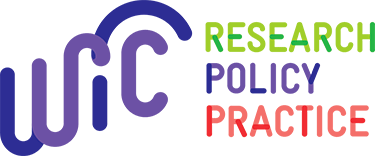This webinar presented an opportunity to learn about ongoing efforts to improve food access in New Jersey through healthy corner store programming. Presenters: Karin Mille, NJ DOH Community Health and […]
This webinar focused on three different strategies that document the many significant impacts of WIC program participation. The strategies were: 1. Maximizing the use of WIC EBT data 2. Using […]
The webinar provided an update on the status of the NWA’s national recruitment & retention campaign. Presenter: Hannah Shultz, National WIC Association
Abstract: One of the most worrisome aspects of the growing tide of obesity in the United States is the high rate of overweight among children. Over one in five young […]
The mission of the Special Supplemental Nutrition Program for Women, Infants, and Children (WIC) is to safeguard the health of low-income women, infants, and children through age 4 who are at nutritional risk. WIC provides nutritious foods to supplement diets, nutrition education, and referrals to health care and other social services. Administered by USDA's Food and Nutrition Service (FNS), almost half of all infants and about a quarter of all children ages 1-4 in the United States participate in the program. WIC is USDA's third-largest food and nutrition assistance program, accounting for 10 percent of total Federal spending on food and nutrition assistance. This report describes the WIC program-how it works, its history, program trends, and the characteristics of the population it serves. It also examines current issues facing WIC, focusing mainly on those with important economic implications.
Despite the health benefits of participation, many eligible households do not participate in the Special Supplemental Nutrition Program for Women, Infants, and Children (WIC). While roughly half of infants born in the United States receive WIC benefits, USDA statistics indicate that eligible pregnant women and children 1-5 years of age are far less likely to participate in WIC than eligible infants and postpartum women. This implies that a number of pregnant women delay enrollment until after having a child, and that many households leave the program when a participating child turns 1 year old. Research on the factors that influence the dynamics of WIC participation can inform outreach and targeting efforts, so that vulnerable populations receive adequate exposure to the benefits of WIC participation.
Abstract: This study, based on 1976-2010 data, examines the relationship between U.S. economic conditions and participation in the U.S. Department of Agriculture’s five largest nutrition assistance programs. It also describes […]
WIC provides supplemental food, nutrition education, and referrals to health care and other social services to low-income, nutritionally at-risk women, infants, and children up to 5 years of age. This report explains how WIC works, examines program trends, describes some of the lesser known effects of WIC, and discusses some of the major economic issues facing the program.
This report compares food shopping patterns of (1) Supplemental Nutrition Assistance Program (SNAP) households to nonparticipant households, (2) participants in the Special Supplemental Nutrition Assistance Program for Women Infants and Children (WIC) to nonparticipants, and (3) food-insecure to food-secure households.
This is annual WIC program data on WIC participation from all 90 WIC state agencies, collected and compiled by the USDA Food and Nutrition Service.
